 Your new post is loading...
 Your new post is loading...

|
Scooped by
Gust MEES
April 4, 2016 4:36 AM
|
Change Management is a process that should be included in the planning and delivery of a project from the very beginning. The full impact of change is often not taken into consideration in the development of project plans and this is a mistake.
Other times one needs to drive a behavioural changethat results in a project team being formed (Safety/Hygiene etc)

|
Scooped by
Gust MEES
April 1, 2016 9:55 AM
|

|
Scooped by
Gust MEES
March 31, 2016 3:47 PM
|

|
Scooped by
Gust MEES
March 31, 2016 1:38 PM
|
“When we have a rich meta-strategic base for our thinking, that helps us to be more independent learners,” said Project Zero senior research associate Ron Ritchhart at a Learning and the Brain conference. “If we don’t have those strategies, if we aren’t aware of them, then we’re waiting for someone else to direct our thinking.”
Helping students to “learn how to learn” or in Ritchhart’s terminology, become “meta-strategic thinkers” is crucial for understanding and becoming a life-long learner. To discover how aware students are of their thinking at different ages, Ritchhart has been working with schools to build “cultures of thinking.” His theory is that if educators can make thinking more visible, and help students develop routines around thinking, then their thinking about everything will deepen.
His research shows that when fourth graders are asked to develop a concept map about thinking, most of their brainstorming centers around what they think and where they think it. “When students don’t have strategies about thinking, that’s how they respond – what they think and where they think,” Richhart said. Many fifth graders start to include broad categories of thinking on their concept maps like “problem solving” or “understanding.” Those things are associated with thinking, but fifth graders often haven’t quite hit on the process of thinking. Learn more / En savoir plus / Mehr erfahren: https://gustmees.wordpress.com/2015/07/19/learning-path-for-professional-21st-century-learning-by-ict-practice/ https://gustmees.wordpress.com/2014/10/03/design-the-learning-of-your-learners-students-ideas/

|
Scooped by
Gust MEES
March 31, 2016 9:51 AM
|
Learning by Doing
Education, like life itself, should not be a spectator sport. Merely listening or even reading may create the illusion of learning, but without active engagement, retention of course material, or the ability to apply it, is laughably low. Students who engage in hands-on activities understand concepts more deeply and remember them more accurately.
Project-based, case-based, and team-based learning and problem-solving are activity-based approaches to teaching and learning, allowing students to become creators of knowledge rather than mere recipients of knowledge.
Students might annotate a text or play or work of art, map and analyze data, visually represent change over time, document a neighborhood or community. The web can then make student projects and research publicly accessible.
By learning by doing can take even richer forms. A solver community brings together students and faculty to “crowdsource” innovative solutions to the critical challenges of our time. Tackling a real-world challenge is a proven way to nurture a community of engage, creative learners. One of the broader goals is to transform a class of students into a knowledge network, an ongoing community that can continue to partner and share expertise and insights.
Then there are maker spaces. These are innovation greenhouses, incubators, or accelerators where innovators – whether faculty, students, staff, or others from outside the campus – can work individually or collaborative on projects in a supportive environment.
A new kind of student populates many campuses defined not by demographic characteristics, but by mindset and aspirations. Extraordinarily entrepreneurial, these students, in their spare time, create apps, found start-ups, and devise creative solutions to a host of pressing environmental, health, and technology problems. Learn more / En savoir plus / Mehr erfahren: https://gustmees.wordpress.com/2015/07/19/learning-path-for-professional-21st-century-learning-by-ict-practice/ https://gustmees.wordpress.com/2014/10/03/design-the-learning-of-your-learners-students-ideas/

|
Scooped by
Gust MEES
March 31, 2016 8:05 AM
|

|
Scooped by
Gust MEES
March 25, 2016 11:54 AM
|

|
Scooped by
Gust MEES
March 24, 2016 1:23 PM
|

|
Scooped by
Gust MEES
March 23, 2016 7:00 PM
|

|
Scooped by
Gust MEES
March 23, 2016 6:26 PM
|

|
Scooped by
Gust MEES
March 23, 2016 10:57 AM
|
Depuis plusieurs années déjà, le CGIE déploie la plateforme EvaSys tout spécialement pour automatiser le processus d’évaluation des enseignements et des formations. Adapté à la gestion des évaluations multiples, EvaSys permet de générer et d'exploiter des enquêtes papier ou en ligne et répond ainsi à la problématique globale d'une démarche qualité.
EvaSys permet:
d'apporter un appui aux formations dans le déploiement des enquêtes d’évaluation,
de garantir l’anonymat

|
Scooped by
Gust MEES
March 19, 2016 11:32 AM
|

|
Scooped by
Gust MEES
March 17, 2016 9:31 AM
|
|

|
Scooped by
Gust MEES
April 2, 2016 9:07 AM
|

|
Scooped by
Gust MEES
April 1, 2016 8:36 AM
|

|
Scooped by
Gust MEES
March 31, 2016 3:15 PM
|
Communication is a skill that must constantly be refined and changed based on the desired outcomes. Yet, for communication to be effective; one must always communicate a whole 360 degrees (up, down, and sideways).

|
Scooped by
Gust MEES
March 31, 2016 12:15 PM
|
The european digital championships for students ! Prize : 50.000€. Free Registration. Whether you are a team or a sponsor, save the date: 10th May, and register today

|
Scooped by
Gust MEES
March 31, 2016 9:44 AM
|

|
Scooped by
Gust MEES
March 29, 2016 9:33 AM
|
What compels people to pursue more radical innovations in education? It has now been almost two decades since I started to more seriously and systematically study innovations in education and innovative learning organizations. Many of the musings about that show up in the chapters of my book on Missional Moonshots (not to mention the many articles on this blog), but since my exploration started, I can’t think of a single day that has passed without some thought experiment or reflection about educational innovation. In that sense, it has become a consuming passion for me because I see educational innovation as an important social good, and I have immense respect for those who tap into the courage, creativity and hard work necessary to pursue revolutionary or radical innovations in education. Learn more / En savoir plus / Mehr erfahren: https://gustmees.wordpress.com/2016/02/18/the-new-possibilities-to-learn-and-teach-with-ict/

|
Scooped by
Gust MEES
March 24, 2016 7:41 PM
|
At some point in our lives, we’ve all practiced some counterproductive learning habits. We’ve sabotaged ourselves without realizing it, and found ourselves stuck. There have been failures we believe have defined our potential. We’ve obsessed over perfect solutions and singular pathways. In frustrated moments we’ve refused help from others, thinking acceptance means weakness. We’ve done this as teachers, students, friends, and parents.
These are not crimes; they’re part of what makes us human. Our counterproductive learning habits usually come from what we observe and hear. We pick things up as children from well-intentioned adults in our lives. In addition, the experiences of others constantly unfold right in front of us. We observe actively, and we remember.
Eventually we come to believe that what we see is how things are, and that it never changes. We know now that this doesn’t have to be the case. We know now that we can create our own experiences. Let’s make them good ones when it comes to learning.
Leartn more / En savoir plus / Mehr erfahren: https://gustmees.wordpress.com/2015/07/19/learning-path-for-professional-21st-century-learning-by-ict-practice/

|
Scooped by
Gust MEES
March 24, 2016 9:59 AM
|
Stimuler les potentialités dès le plus jeune âge
Lors d’une conférence de presse le 23 mars 2016, le ministre de l’Éducation nationale, de l’Enfance et de la Jeunesse, Claude Meisch, a présenté le concept d’éducation plurilingue que le gouvernement mettra en place dans les crèches.
Les premières années de leur vie, les enfants ont d'impressionnantes facilités pour apprendre les langues, alors que cet apprentissage devient plus laborieux à un âge avancé. Pour offrir à tous les enfants les meilleures chances de départ, le ministère entend saisir cette opportunité et préparer les enfants de 1 à 4 ans au contexte multilingue de l’école et de la société luxembourgeoise. À cette fin, il a élaboré un concept-cadre qui aidera les crèches à développer d’une manière ludique les ressources plurilingues des très jeunes enfants.
Le multilinguisme est une réalité de la société luxembourgeoise, et la réussite scolaire et professionnelle y est également fortement liée. À l’école fondamentale, la succession rapide dans l’apprentissage des langues peut être un obstacle: les élèves luxembourgeois rencontrent souvent des difficultés avec le français, tandis que l’allemand pose plus problème pour ceux qui parlent une langue non-germanophone à la maison. À l’enseignement secondaire, le taux de redoublement est en partie dû à des déficits en langues.

|
Scooped by
Gust MEES
March 23, 2016 6:49 PM
|

|
Scooped by
Gust MEES
March 23, 2016 3:39 PM
|
Wie sieht so eine Studie aus? Im Wesentlichen nimmt man eine Gruppe von Schüler*innen, bei denen man etwas verändert und eine Gruppe von Schüler*innen, bei denen man nichts ändert und guckt sich den Unterschied an – das wird in der Regel am Schreiben desselben Tests gemacht. Dann kommen statistische Meisterwerke ins Spiel, die definieren, ob die Verteilung so ist, dass das Ergebnis verlässlich ist. Und wenn es das ist, steht das Ergebnis der Forschungsgemeinschaft zur Verfügung.
John Hattie hat sich die ganze Forschungslandschaft angesehen und hat 138 Einflussgrößen auf Lernen identifiziert, die schon oft genug erforscht wurden, um verlässliche Daten zu haben. Die Bandbreite ist riesig, vom Geburtsgewicht des Kindes zu Schulgröße. Nun hat er nicht tatsächlich 5.000 Studienergebnisse verwertet, sondern 800 Metastudien. Das heißt, dass andere Wissenschaftler vor ihm schon einmal viele Ergebnisse durch denselben Prozess haben laufen lassen. Das wahrhaft innovative an der Hattie-Studie ist, dass es eine Meta-Studie von Meta-Studien ist.
Nach 15 Jahren hat er es dann geschafft. Er hat zu allen 138 Einflussgrößen die Effektstärke herausgefunden, also wie stark hier eine Veränderung das Lernergebnis verändert. Ganz salopp gesagt: positive Zahlen beweisen positive Wirkung, negative Zahlen negative Wirkung. Was genau das bedeutet, unterscheidet sich immer ein wenig je nach Interpretationsschema. Ein Wert kleiner als 0,5 gilt als kleiner Effekt, zwischen 0,5 und 0,8 zählt als mittlerer Effekt und Werte darüber als großer Effekt. Andere finden, dass die großen Effekte erst bei 1,2 beginnen. John Hattie selbst findet, man muss das ein wenig an die Gegebenheiten der Bildung anpassen und findet alles über 0.3 sehr ernst zu nehmen. So, Ende meiner statistischen Einführung… Learn more / En savoir plus / Mehr erfahren: http://www.bak-online.de/downloads/Seminar2-2014_S121-130.pdf http://www.scoop.it/t/21st-century-learning-and-teaching/?tag=John+HATTIE

|
Scooped by
Gust MEES
March 22, 2016 4:21 AM
|

|
Scooped by
Gust MEES
March 17, 2016 6:42 PM
|
Visible Learning for Teachers draws on the findings of John Hattie’s ground-breaking meta study Visible Learning (2009). Hattie’s follow up book concentrates on the underlying story behind the data and provides many hands on examples for Visible Learning in the… Learn more / En savoir plus / Mehr erfahren: http://www.bak-online.de/downloads/Seminar2-2014_S121-130.pdf http://www.scoop.it/t/21st-century-learning-and-teaching/?tag=John+HATTIE
|



 Your new post is loading...
Your new post is loading...









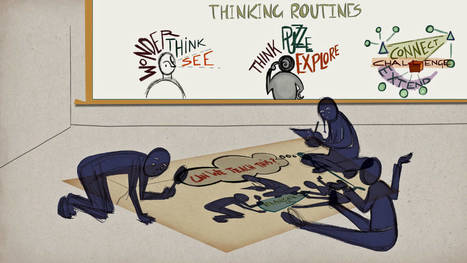




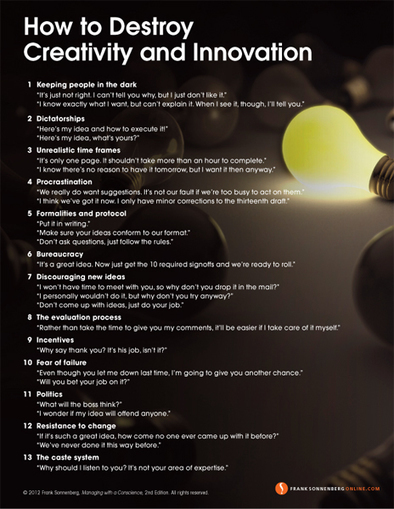











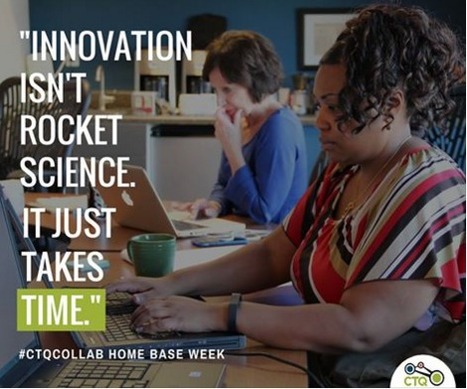


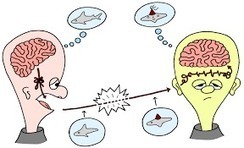


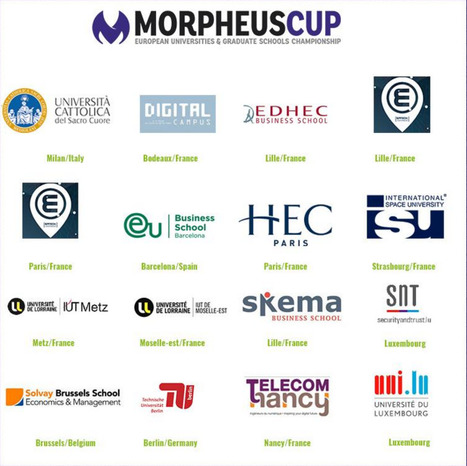







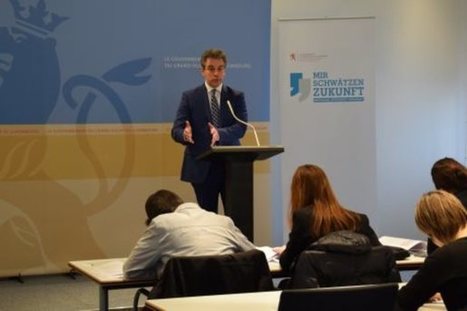
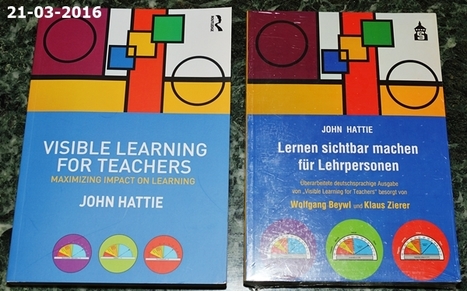
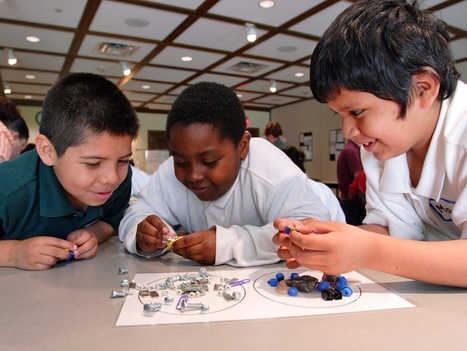

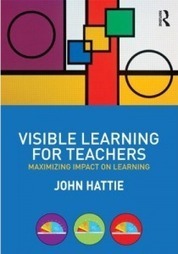






Change Management is a process that should be included in the planning and delivery of a project from the very beginning. The full impact of change is often not taken into consideration in the development of project plans and this is a mistake.
Other times one needs to drive a behavioural changethat results in a project team being formed (Safety/Hygiene etc)
Change Management is a process that should be included in the planning and delivery of a project from the very beginning. The full impact of change is often not taken into consideration in the development of project plans and this is a mistake.
Other times one needs to drive a behavioural changethat results in a project team being formed (Safety/Hygiene etc)